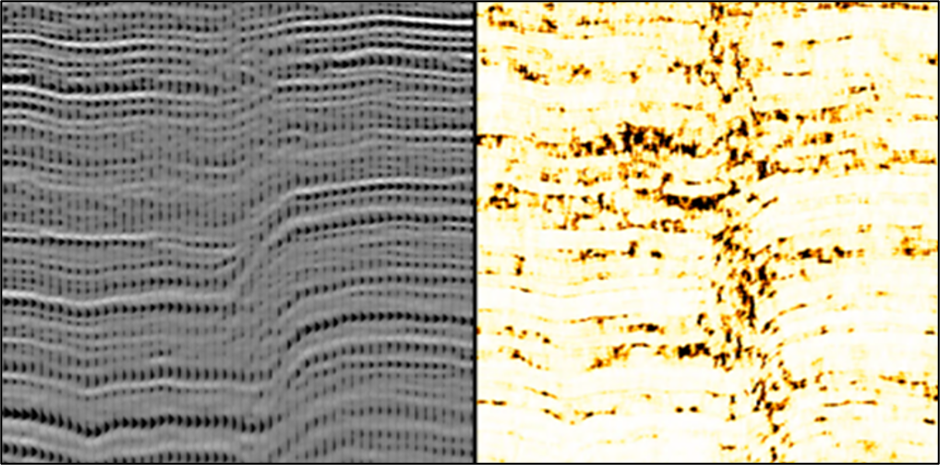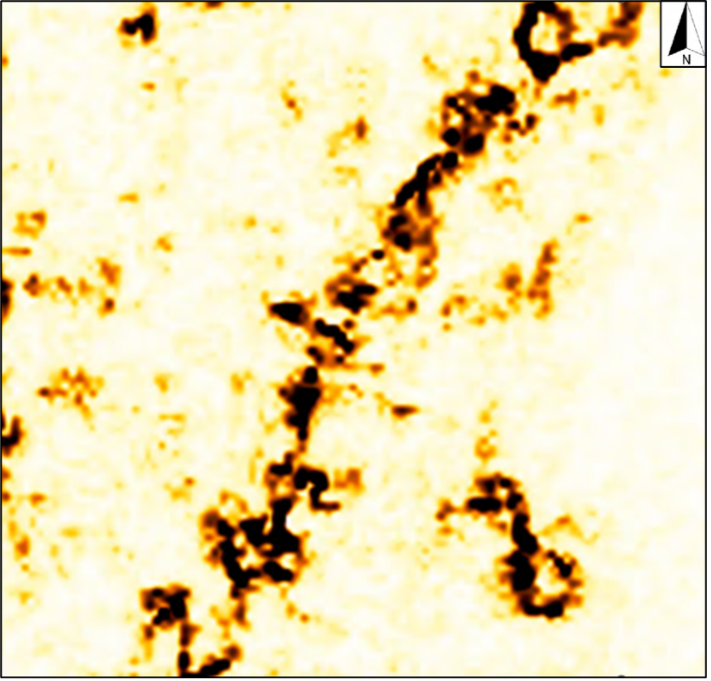Incoherence: A Geometric Attribute for Fault Identification
Incoherence: A Geometric Attribute for Fault Identification
Incoherence is a measure of the difference between adjacent waveforms or traces in a seismic volume, serving as a crucial geometric attribute for analyzing seismic data. There are multiple ways to calculate incoherence including Cross correlation, Semblance, Variance, Eigen structure method, Gradient Structure Tensor-based Coherence, and Least Squares Coherence (Bednar, 1998). Here is an example taken from Fairfield Geotechnologies Delaware Basin PSDM showing the seismic volume next to the incoherence volume.

Seismic volume incoherence is used to enhance the ability to interpret structural and stratigraphic discontinuities. Incoherence is heavily impacted by noise due to the random nature of change it creates which is highlighted by the difference it causes between traces. A stratal slice of the incoherence volume over a generally continuous reflector clearly highlights faults.

About the Author
Taylor McKay is Jr. Geophysicist focused on understanding the value that seismic attributes and rock properties bring to subsurface interpretation.
References
Bednar, J. (1998). Least Squares dip and coherency attributes. The Leading Edge, 17 (6). doi:https://doi.org/10.1190/1.1438...
Post Date
Oct 12, 2022Post Category
Technical Papers
Author
Taylor McKay, Fairfield Geotechologies Jr. Geophysicist